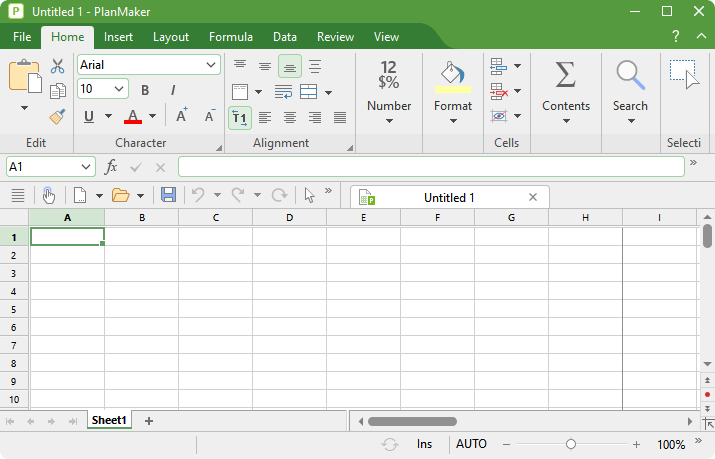In order to use PlanMaker directly while working through this chapter, you should launch it now.

As you can see from the figure, worksheets are divided into rows and columns. Each worksheet can contain up to 1 million rows and 16384 columns. They are labeled as follows:
▪The rows are numbered consecutively.
▪Conversely, the columns are labeled with letters: A to Z, then AA to AZ, then BA to BZ, etc.
The matrix of rows and columns results in a grid composed of "boxes". These boxes are called the cells of the worksheet.
Each of the cells has its individual coordinates: "B5", for example, denotes the cell in the fifth row of column B (the second column). "A3" is the cell in the third row of column A (the first column) and so on. These coordinates are referred to as the cell address.
The cell address is very important because calculations often refer to other cells: If, for example, you want to have twice the value of cell A1 in cell A2, you would enter =A1*2 in cell A2.
Twice the value of A1 is now displayed in A2. If you change the value in A1, the resulting calculation in cell A2 is automatically updated.